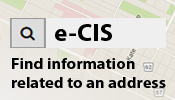Holiday season – View holiday hours for City of Winnipeg facilities and services from December 24 to January 1.
Pedestrian Crossing Control Evaluation
In recommending installation of a new pedestrian crossing control, the Winnipeg Public Service follows the guidance provided in the Transportation Association of Canada Pedestrian Crossing Control Guide, 3rd Edition.
Updated City guidelines for pedestrian crossing control based on the Pedestrian Crossing Control Guide were approved by the Standing Policy Committee on Infrastructure Renewal and Public Works on October 15, 2020 (Item No. 11) and are used to assess requests from the public for new pedestrian crossing locations.
Preliminary Assessment
The warrant for pedestrian crossing control is determined using the preliminary assessment based on factors that include:
- Vehicular volume at the crossing location
- Pedestrian volume
- Proximity to other traffic control devices
- Route connectivity requirements
It should be noted that engineering judgement, knowledge and experience plays a role in the decision making (warrant) process.
- A 'WARRANTED' location has met the established criteria for pedestrian crossing control based on the preliminary assessment.
- An 'UNWARRANTED' location has not met the established criteria for pedestrian crossing control based on the preliminary assessment.
Treatment selections for elementary and middle schools are assessed differently than the Pedestrian Crossing Control Guide. Elementary and middle school crossings that initially only warrant a ground mounted system may be upgraded to a push-button activated crossing (rectangular rapid flashing beacon or pedestrian corridor).
Types of Treatment Systems
If a pedestrian crossing control is warranted at a given location, the crossing location is further assessed to determine the most appropriate type of treatment system.
Four treatment systems are commonly installed in Winnipeg:
- Ground-mounted System
The ground-mounted system is the most basic system and includes side-mounted signs and pavement markings.
- Rectangular Rapid Flashing Beacon
Rectangular Rapid Flashing Beacons (RRFB) are a pedestrian push-button activated system that consists of pavement markings, side mounted signs, and two rapid flashing lights mounted above the side mounted signs.
- Pedestrian Corridor (Overhead Flashing Beacon System)
Pedestrian corridors are a pedestrian push-button activated system that consists of pavement markings, side and overhead mounted signs, and overhead flashing lights. New installations include additional side mounted flashing lights. - Traffic Signal System
Traffic signal systems consist of both half and full traffic signals, which use red, amber, and green traffic signals to control vehicle traffic. Pedestrian traffic is controlled by signals that display Walk, Flashing Don't Walk and Don’t Walk indications; separate crossings may be provided for cyclists at these locations.
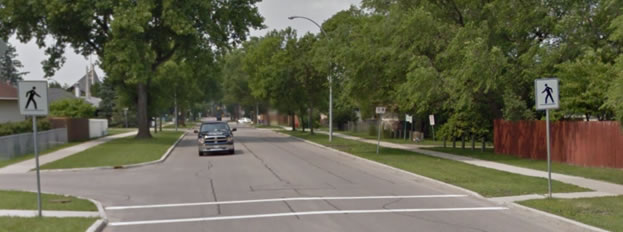
(Cottonwood Road and Cherry Crescent - Google Street View)
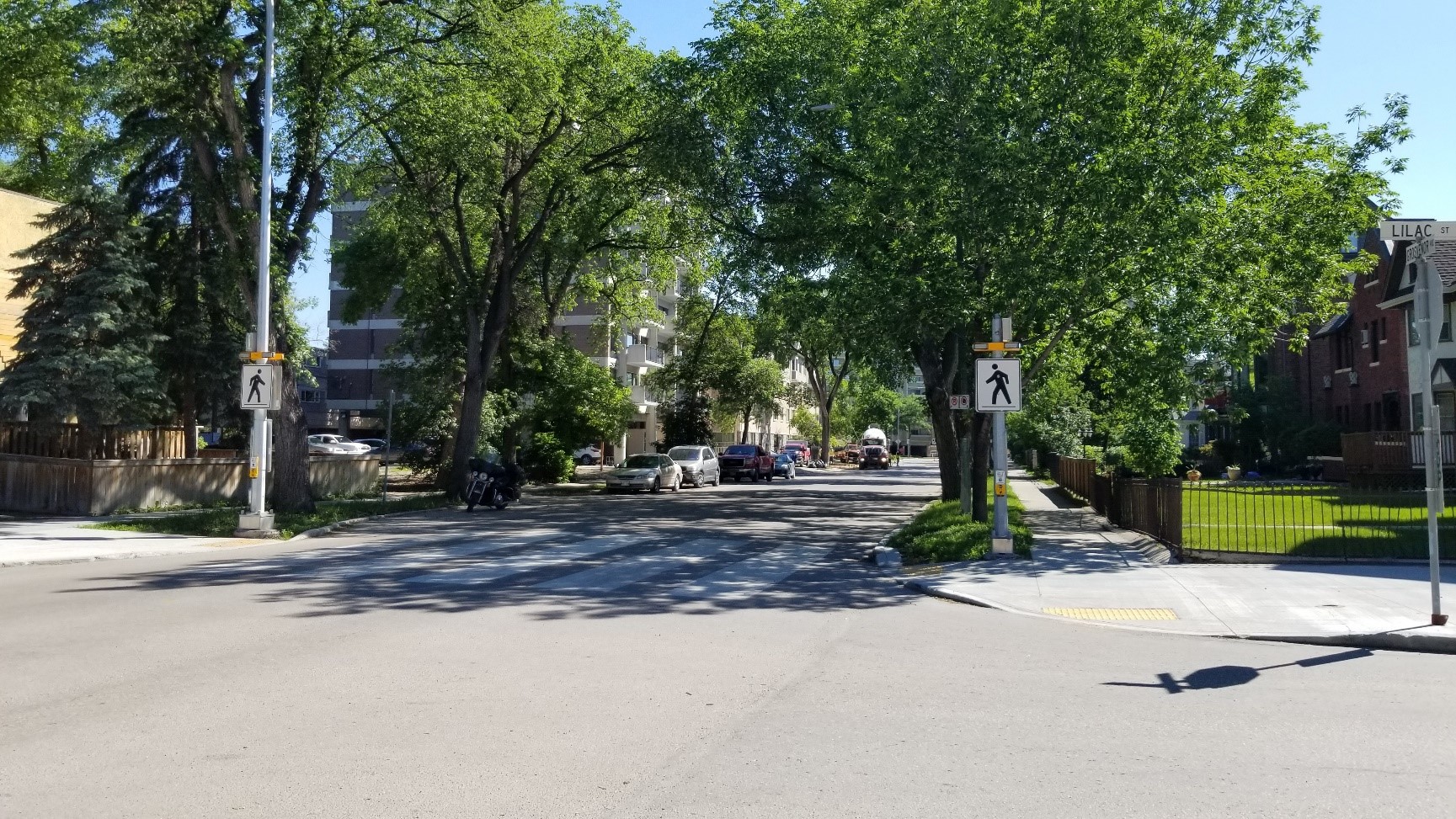
(Grosvenor Avenue and Lilac Street – site visit photo)
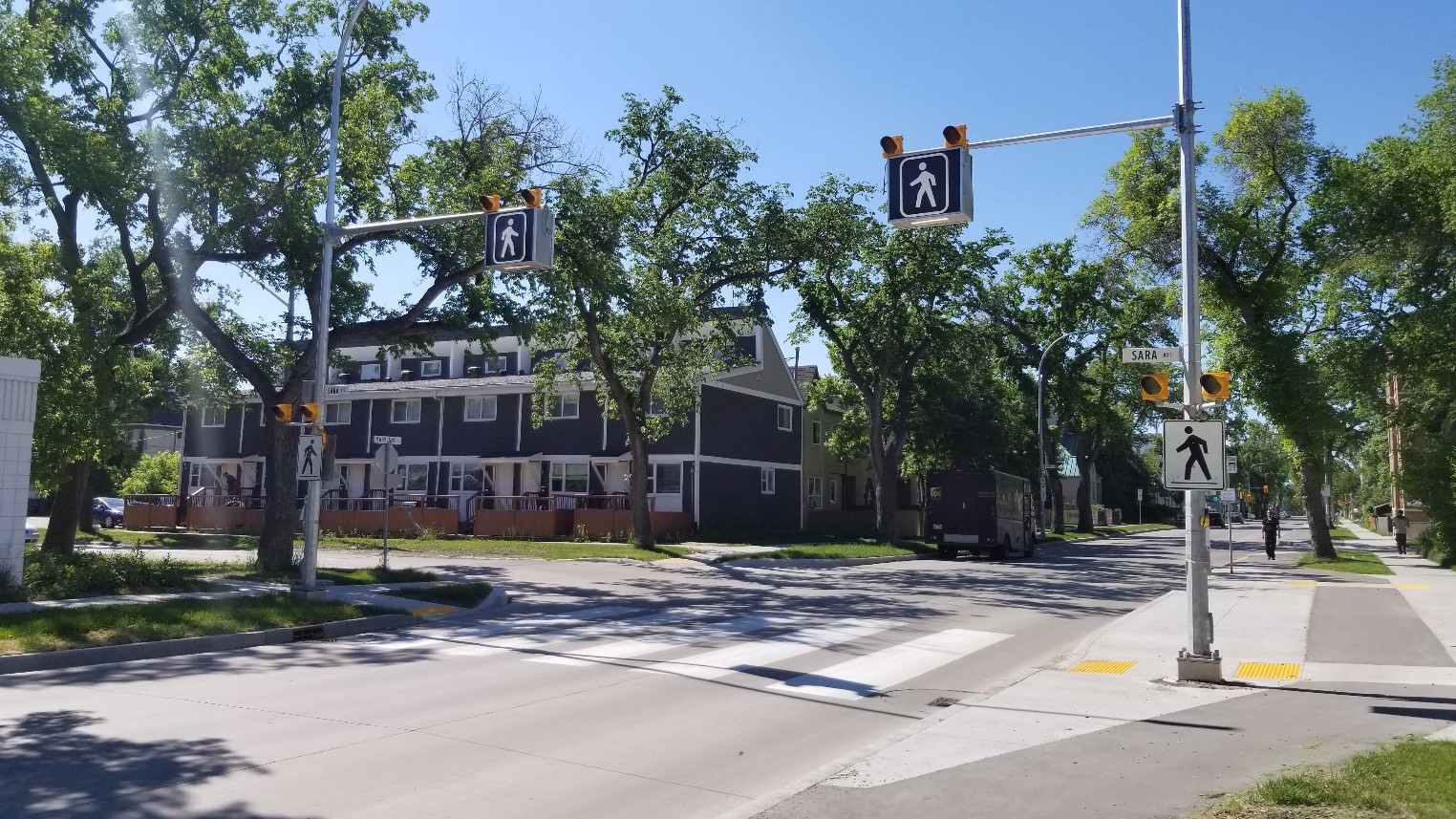
(Maryland Street & Sara Avenue – site visit photo)
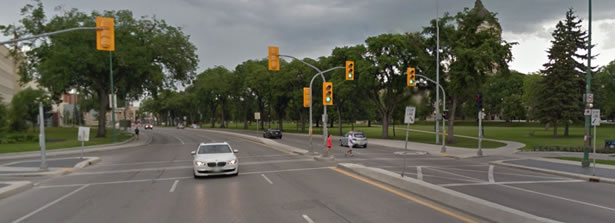
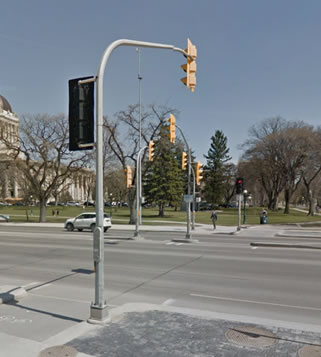
(Osborne Street and Granite Way - Google Street View)
Prioritization
A number of criteria are used when prioritizing crossing locations. Each of the criteria is assigned a weighting factor and each location gets a total score. Locations with a higher total score are higher priority.
The following criteria are used to assess the priority:
- Conflicting vehicle volume
- Roadway posted speed limit
- Roadway cross-section (number of lanes)
- School crossing location
- Higher presence of older pedestrians or pedestrians with impairments
- Poverty level across the geographic area
- Proximity to nearest controlled crossing location
- Hourly pedestrian volume
- Pedestrian collision history
- Active Transportation network connectivity
- Transit network connectivity
- Upcoming road renewal and capital projects
- Cost sharing through development agreements
- Network-wide considerations and connectivity
There are limited resources for installing pedestrian corridors and traffic control signals. As a result, warranted locations must be prioritized relative to each other City-wide so that limited funds are dedicated to locations with the highest need. Prior to the installation of any pedestrian corridors or traffic signals, approval must be sought and granted by the Standing Policy Committee on Infrastructure Renewal and Public Works. As part of the City’s Traffic Engineering Improvements Program (TEIP), there is the capacity to install pedestrian corridors and traffic signals at approximately 3-5 locations each year. Pedestrian corridors and traffic signals may also be installed as part of major road rehabilitation or reconstruction projects.

